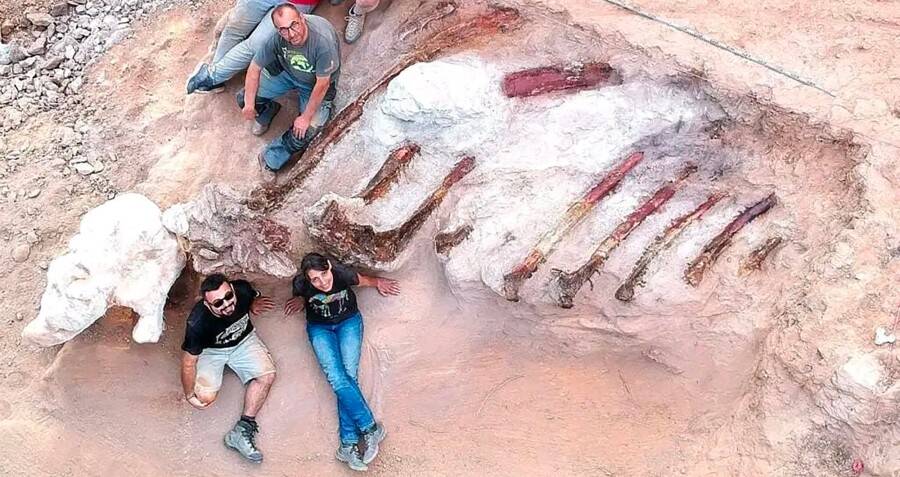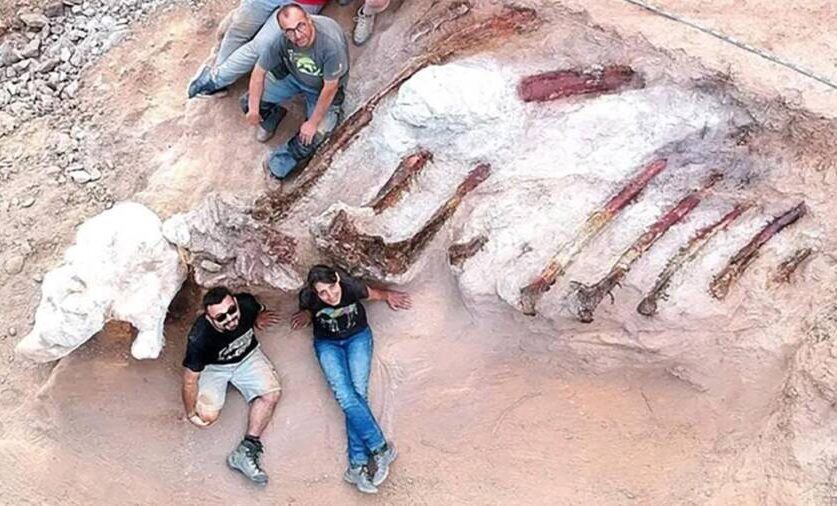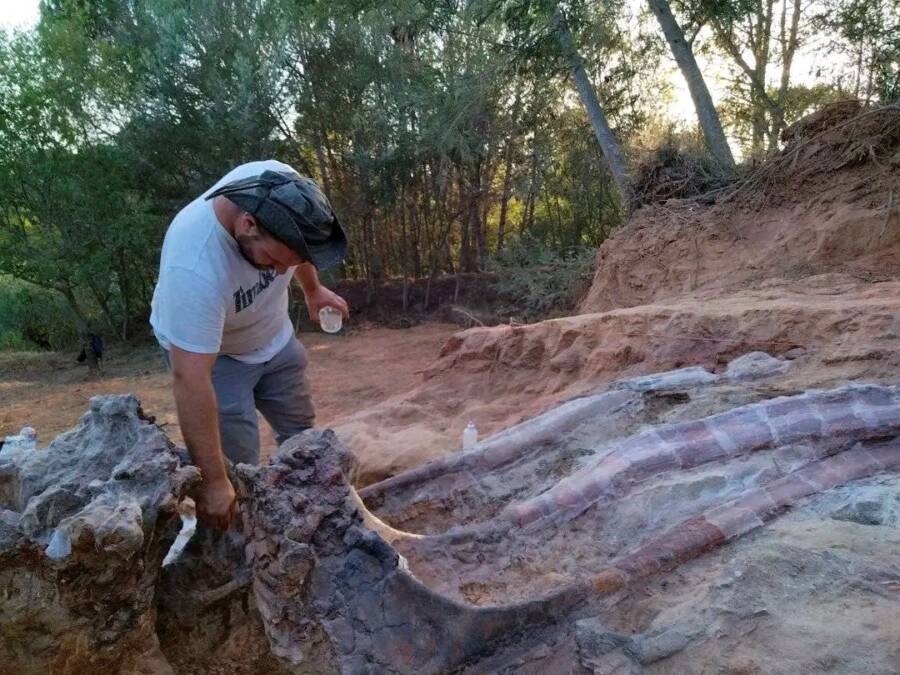
Paleontologists have determined that the dinosaur is a sauropod, a four-legged herbivore characterized by its long neck and tail.

Instituto Dom Luiz (Faculty of Sciences of the University of Lisbon)Paleontologists have been painstakingly excavating the 82-foot-long dinosaur.
In 2017, a homeowner in Pombal, Portugal, came across several fossilized bone fragments while doing construction work. Paleontologists came to check things out — and now believe that the dinosaur remains unearthed in his backyard could be the largest ever found in Europe.
So far, paleontologists have excavated a substantial portion of the prehistoric beast, including its ribs and vertebrae. They suspect that the dinosaur is a kind of sauropod — an herbivore with a long neck and tail — and that it weighed 48 tons, stood 40 feet tall, and stretched 82 feet long.
“It is not usual to find all the ribs of an animal like this, let alone in this position, maintaining their original anatomical position,” Elisabete Malafaia, a postdoctoral researcher at the Faculty of Sciences of the University of Lisbon, said according to a news release reported by CNN.
“This mode of preservation is relatively uncommon in the fossil record of dinosaurs, in particular sauropods, from the Portuguese Upper Jurassic.”

Instituto Dom Luiz (Faculty of Sciences of the University of Lisbon)The dinosaur fossils are an “unusual” find.
Not only is the find itself unusual but the dinosaur is also remarkable — as paleontologists believe that it may be the largest dinosaur remains ever found in Europe. Malafaia told CBS News that its ribs alone are 10 feet long and are “the largest ribs of a sauropod that are currently known in Europe and one of the largest that was described worldwide.”
Indeed, the BBC reports that sauropods are among the largest dinosaurs known to man. According to National Geographic, a sauropod named in 2017 was determined to be both the largest known dinosaur, and the largest animal that ever walked the earth. (This dinosaur, Patagotitan mayorum, dwarfed the dinosaur found in Portugal at 102 feet long and 69 tons.)
For now, the paleontologists aren’t sure what kind of sauropod they’ve uncovered in Portugal, or if it’s a new species. They have, however, determined that the dinosaur likely lived some 150 million years ago, during the latter part of the Jurassic period.
“It is possible to believe that we can be in the presence of a new specimen of this poorly known sauropod,” Francisco Ortega, a paleontologist at the National Distance Education University in Madrid and a member of the excavation team told Live Science. “Which is very exciting.”
According to Live Science, paleontologists have theorized that the Portugal sauropod could be brachiosaurid, possibly a species called Lusotitan atalaiensis which lived on the Iberian peninsula some 152 million years ago. But it’s simply too early to know for certain.
“This group of dinosaurs are only represented by a few discoveries, and it is particularly rare in the Upper [Late] Jurassic of Europe,” Ortega explained to Live Science. Additionally, the dinosaur discovered in Portugal is bigger than any known Lusotitan atalaiensis, meaning that it could be a large version of that species or a new species altogether.

Matt Wedel/Wikimedia CommonsA skeleton of a Brachiosaurus altithorax outside the Field Museum in Chicago.
Whatever the dinosaur found in Portugal is, paleontologists agree that it’s an incredible discovery. Steve Brusatte, a paleontologist and professor at the University of Edinburgh in Scotland, described it as “gobsmacking” to CNN, gushing over “a dinosaur ribcage sticking out of somebody’s garden.”
“(It goes to show) you can potentially find them anywhere there is rock of the right age and right type for preserving Jurassic-aged bones, whether it’s in the badlands or someone’s backyard,” Brusatte told CNN.
And paleontologists are hopeful more prehistoric riches will be found in Portugal soon. The Pombal region has an “abundant fossil record of dinosaurs and other vertebrates,” Malafaia told CBS News. She added: “This fossil record has added important data to better understand the continental faunas that inhabited the Iberian Peninsula during the Late Jurassic.”